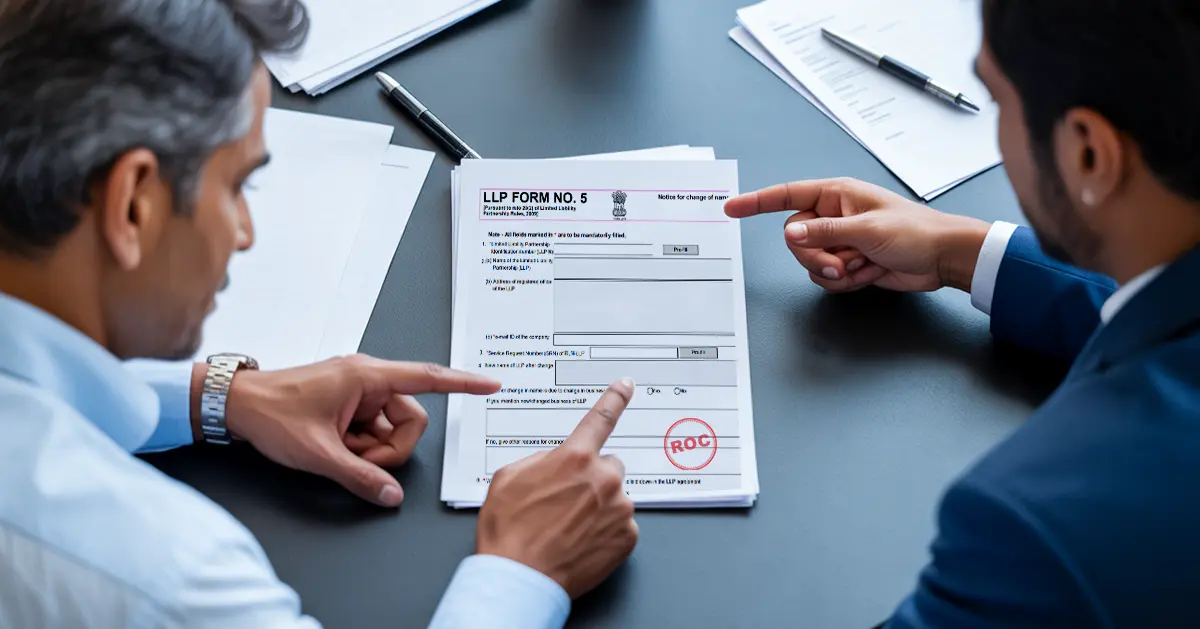
LLP Winding Up Process: Step-by-Step Process
At some point, partners of a Limited Liability Partnership (LLP) may decide to shut down operations due to financial constraints, inactivity, or strategic changes. Winding up an LLP is a legal process that ensures the proper dissolution of the business, settling liabilities and complying with regulatory requirements.
If an LLP is inactive but not officially closed, it may still be liable for compliance and penalties. Therefore, following a structured winding-up process is crucial.
In this guide, we will cover everything you need to know about the steps to close an LLP, including types, eligibility, required documents, and a step-by-step closure procedure.
What Does Winding Up an LLP Mean?
Winding up an LLP refers to the formal process of closing the business and dissolving the legal entity. It involves settling debts, liquidating assets, distributing remaining funds among partners, and officially removing the LLP from the Ministry of Corporate Affairs (MCA) records.
Unlike a simple business closure, LLP winding up requires legal and regulatory compliance to avoid future liabilities.
Types of LLP Winding Up: Voluntary and Compulsory
There are two main ways to wind up an LLP:
- Voluntary Winding Up: When partners decide to close the LLP voluntarily, they follow a structured process of liquidation and deregistration.
- Compulsory Winding Up: This occurs when regulatory authorities, creditors, or the National Company Law Tribunal (NCLT) enforce the closure due to non-compliance, financial distress, or fraudulent activities.
Eligibility Criteria for LLP Winding Up
Before initiating the winding-up process, ensure that the LLP meets the following criteria:
- The LLP should have obtained consent from at least 75% of its partners.
- There should be no pending debts or liabilities, or an arrangement should be in place to settle them.
- The LLP should not be engaged in any active business operations for at least one year.
- Compliance with MCA and tax authorities should be up to date.
Failure to meet these criteria may lead to legal complications during the winding-up process.
Documents Required for LLP Winding Up
To wind up an LLP, you must submit several essential documents, including:
- LLP Resolution for Winding Up
- Consent of Partners and Creditors
- Statement of Assets and Liabilities
- Indemnity Bond from Partners
- Affidavit of Declaration
- Latest Income Tax Returns
- Copy of PAN and LLP Agreement
- No Objection Certificate (NOC) from Creditors (if applicable)
- Bank Closure Certificate
Ensuring these LLP closure documents are in order helps streamline the process and avoid delays.
Get your LLP and other companies wind up within minutes from RegisterKaro.
Step-by-Step Process to Wind Up an LLP
Here is a detailed breakdown of the steps to close an LLP:
Step 1: Pass a Resolution
Partners must pass a resolution to wind up the LLP and file Form 24 with the MCA within 30 days.
Step 2: Obtain Consent from Creditors
If the LLP has creditors, their consent must be obtained, stating they have no objections to the winding-up process.
Step 3: Settle All Liabilities
Before proceeding further, ensure that all outstanding debts and obligations are cleared. If liabilities remain, a repayment arrangement should be agreed upon.
Step 4: Prepare Final Accounts and Statements
The LLP must prepare a final statement of accounts and submit it to the Registrar of Companies (RoC).
Step 5: Submit Required Documents
All necessary documents must be filed with the MCA, including affidavits, indemnity bonds, and tax clearance certificates.
Step 6: Filing of Application for Strike-Off
Once all formalities are complete, the LLP must file Form 24 to request the removal of its name from the MCA database.
Step 7: Approval and Dissolution
Upon verification, the RoC will publish a notice for objections. If no objections arise, the LLP is officially dissolved.
This is how the LLP winding-up process works.
Role of Creditors and Stakeholders in LLP Closure
Creditors and stakeholders play a crucial role in the winding-up process. Their approval ensures that no financial obligations are left unsettled. If creditors raise objections, the LLP must resolve them before proceeding with the closure.
Stakeholders such as employees, suppliers, and investors should also be informed about the closure to maintain transparency and avoid disputes.
Common Mistakes to Avoid During LLP Winding Up
- Ensure all filings, taxes, and financial statements are up to date.
- LLP closure involves legal formalities that require expert guidance so make sure to involve one.
- Failing to submit documents on time can lead to penalties.
- Always obtain a No Objection Certificate (NOC) from creditors to prevent future claims.
Legal Consequences of Not Winding Up an Inactive LLP
If an LLP remains inactive but is not officially closed, it may face several legal consequences:
- Failure to file annual returns may attract fines of up to Rs. 100 per day.
- Authorities can hold partners personally liable for any pending dues.
- Partners may be disqualified from holding directorship in any company.
- The RoC may strike off an LLP due to continuous non-filing of returns.
To avoid these issues, it is best to follow the proper winding-up procedure.
Ending Note
Winding up an LLP is a critical step that must be handled with legal compliance and due diligence. Whether the closure is voluntary or compulsory, following the correct procedure ensures a smooth and hassle-free dissolution.
If you’re planning to close your LLP, RegisterKaro provides expert assistance to ensure seamless compliance with regulatory requirements. Contact us today to navigate the LLP winding-up process with ease!
Also Read : LLP Registration In India
Frequently Asked Questions (FAQs)
1. Can I revive an LLP after filing for winding up?
A: No, once the LLP is officially dissolved, it cannot be revived. A new LLP must be registered instead.
2. How long does it take to wind up an LLP?
A: The process typically takes 3 to 6 months, depending on document clearance and approvals.
3. What happens if my LLP has pending liabilities?
A: Pending liabilities must be settled before applying for winding up. Otherwise, a repayment arrangement should be documented.
4. Is LLP winding up mandatory for inactive businesses?
A: Yes, if an LLP is inactive and does not wish to continue, winding up is recommended to avoid penalties.
5. What are the costs involved in winding up an LLP?
A: The costs depend on professional fees, government charges, and any outstanding liabilities that need to be cleared.




